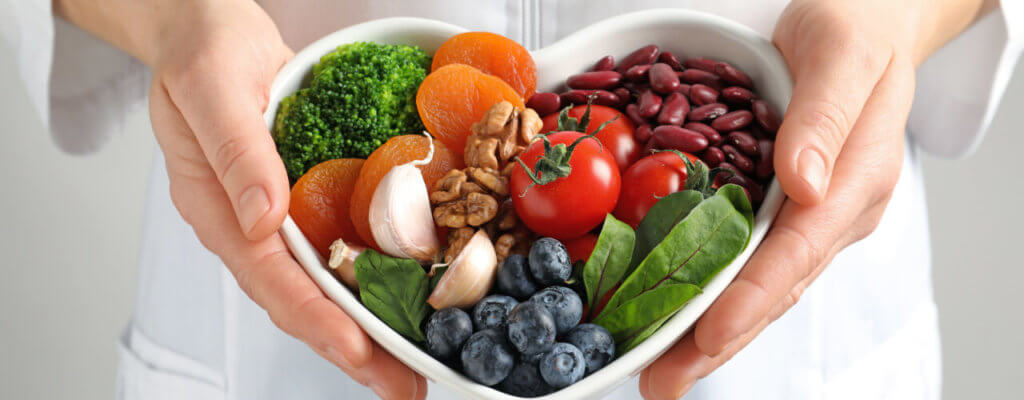Do you deal with chronic inflammation? According to Harvard Health, chronic inflammation can lead to a variety of health ailments such as heart disease and diabetes. Did you know that eating healthy is one way to reduce inflammation?
Whether you have a specific diagnosis for your inflammation (such as osteoarthritis) or you’re not entirely sure what’s causing your pain in your back and joints, changing your diet and exercise routine with physical therapy can help.
If you’re seeing a physical therapist already for chronic inflammation, then you’re probably well aware that this is a condition that can seriously affect your overall health! Physical therapists might recommend a diet high in anti-inflammatory foods for additional pain relief.
Read on to learn more about what kinds of foods cause inflammation, and what foods you should be eating right now to decrease inflammation as well!
Get your fill of vegetable and fruits
Have you ever noticed how the colors of recommended fruits and vegetables create a colorful rainbow? Fruits and vegetables are excellent for boosted immunity and optimum heart health.
Eating colorful foods also fights inflammation. Try to fit more colorful fruits and vegetables into your diet. Orange veggies such as sweet potatoes and carrots, dark green veggies like kale and spinach, red and purple foods like tomatoes and beets, and yellow foods such as corn and sweet peppers are excellent choices to include in your meals and snack dishes.
What foods cause inflammation or make it worse?
One of the fastest ways to reverse inflammation caused by an unhealthy diet is to stop consuming the foods that cause it! This means that if you want true pain relief, you will need to adjust how you view preparing meals and what snacks you’re eating throughout the day.
You might be reading this and groaning, “I already know I eat so many things that aren’t good for me! I just ate ten chocolate chip cookies while reading the first half of this blog!” This is the truth — you probably do already know that sugary foods are bad for your waistline and your heart! Oftentimes, people choose convenience over health when it comes to what they eat. Processed, packaged meals and junk food are full of added sugar, preservatives, and unhealthy trans fat.
Whether your favorite snack foods are overly sweet or salty, it’s time to start slowly easing them out of your meals and opting for healthier snacks in between. Avoid eating too much red meat, fried foods, cookies, cakes, doughnuts, white rice, and white bread. These are some of the worst options for you to eat if you’re particularly sensitive to inflammation and painful flare-ups.
Foods to replace unhealthy options
You might feel a little confused or maybe even panicked about having to change how you eat on your own. Have no fear, there are plenty of healthy and easy alternatives to eating overly processed, unhealthy meals.
For starters, swap out white bread with whole-grain bread. Ditch the white rice for brown rice, and the semolina pasta with garbanzo bean pasta! Where meat is concerned, instead of having a hamburger, turn to better options such as fish, chicken, or veggie/black bean burgers.
Are you taking fish oil pills for omega-3 inflammation protection? If so, make sure you’re also adding actual servings of fish to your diet, such as herring, salmon, trout, tuna, mackerel, and sardines. These are the fish that have the highest Omega-3 fats and they may provide some pain relief where inflammation is concerned.
Instead of heaping on side dishes containing creamy sauces or dressings, opt for salads and greens with tomato salsa, vinaigrettes, greek yogurt, lemon juice, fruit salsa, or herbal olive oil.
Knowing how to properly prepare your food in an anti-inflammatory diet is important as well. You should not fry foods at home or order fried foods for take out or when eat at a restaurant. Instead, choose foods that have been grilled, roasted, or steamed.
Spices, herbs, and supplements can help, too
Many herbs, spices, and supplements are anti-inflammatory and can provide exceptional pain relief. Fish oil and multivitamin pills are two supplements that are known for their anti-inflammatory properties.
Choosing a good herbal supplement such as green tea, cat’s claw, devil’s claw, and Boswellia are great ways to develop a healthier diet. Turmeric and fresh or powdered ginger are also good options to sprinkle on foods or steep as a soothing beverage.
When you’re searching for healthy substitutions in the grocery store aisles, look for more nutritional foods and options that will make a direct impact on your swelling and inflammation. Add these to what you’re eating every week, you may be surprised at how your overall health improves in response.
Ready to decrease your inflammation?
It’s important to consult with a physical therapist about other ways to reduce inflammation and pain, as well as stay in shape. Your diet and nutrition play a huge role in your overall health, but it can’t hurt to have some extra help from a physical therapist.
Physical therapists are movement specialists who can teach you how your exercise routine can be adjusted to fit with your dietary changes. When used together, these changes will reduce your pain and inflammation that causes you discomfort. Contact StepUp Physical Therapy today to learn more about how physical therapy and an anti-inflammatory diet can make a difference in your life!
Source:
- https://www.health.harvard.edu/staying-healthy/foods-that-fight-inflammation
- Chronic Inflammation: Definition, Symptoms, Causes, and …www.healthline.com › health › chronic-inflammation
Tags: diet, Chronic Pain, StepUp Physical Therapy, Natural Treatment, Nutrition, Pain & Inflammation, aches and pains, Natural Pain Relief


